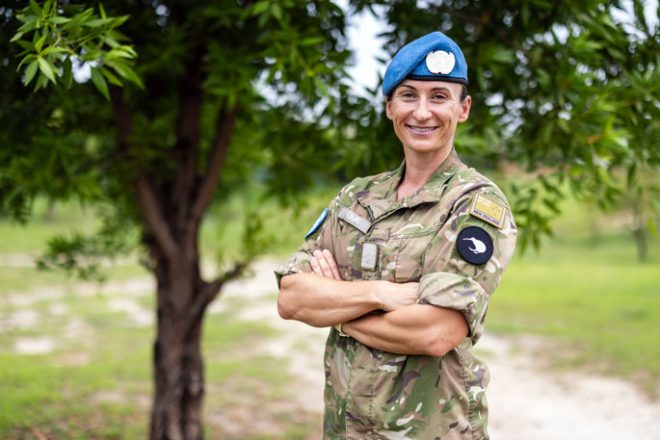남수단에 있는 에밀리 흄 중령과 그녀의 팀은 다가오는 중요한 선거를 준비하기 위해 열심히 노력하고 있으며, 동시에 북한 북부의 인도주의적 위기를 예방하기 위해 노력하고 있습니다.아프리카 국가인 남수단은 정치적 불안정, 내전, 인도주의적 위기, 민족 및 부족 분쟁, 경제 문제 등 많은 문제를 안고 있습니다.
세계 최대 규모의 평화유지 임무인 남수단 주재 유엔 선교부에는 약 18,000명의 인원이 근무하고 있습니다.뉴질랜드 출신인 흄 중령은 현지 국가 고위 장교입니다.그녀는 다른 국가의 군사 파트너, 유엔 경찰, 유엔 민간인 및 인도주의 기관과 협력하는 뉴질랜드 팀의 복지를 담당하고 있습니다.그들의 목표는 평화 협정을 감시하고, 민간인을 보호하고, 원조 전달을 돕는 것입니다.
흄 중령은 솔로몬 제도와 레바논에서 임무를 수행한 후 세 차례 해외에 파견되었습니다.현재 36세인 그녀는 남수단에 있는 14,000명의 유엔 군인을 위한 장기 계획 담당 부국장을 맡고 있습니다.그녀는 또한 남수단 전역, 선교부 본부, 뉴욕 UN 본부 등지에 있는 팀들과도 소통하고 있습니다.
남수단에서 그녀가 맡은 첫 번째 임무 중 하나는 임무를 완수하기에 충분한 군사 자원이 있는지 알아보기 위한 연구를 주도하는 것이었습니다.이 경험을 통해 그녀는 인프라가 제한적이고 조기 경보 시스템이 없는 국가에서 고조되는 긴장 상황에 대처하는 것을 포함하여 현장 팀이 직면한 어려움을 더 깊이 이해할 수 있었습니다.
그녀가 파견되는 과정에서 가장 어려웠던 부분은 많은 남수단 사람들이 살고 있는 빈곤과 고난을 겪는 일이었습니다.그녀는 이 나라 인구 1,100만 명 중 약 830만 명이 인도적 지원에 의존하고 있다고 말합니다.지난 4월 이웃 국가인 수단에서 분쟁이 발발한 이후 상황은 더욱 악화되었습니다.
유엔은 수단 인근 지역에서 발생한 인도주의적 위기를 막기 위해 최선을 다하고 있습니다. 이로 인해 남수단으로 돌아가는 사람들, 난민, 폭력을 피해 도망친 국내 실향민들이 급증하고 있습니다.동시에 양국은 2011년 독립 이후 치러지는 첫 총선을 준비하고 있으며, 이 선거는 내년으로 예정되어 있습니다.
흄 중령은 뉴질랜드가 남수단에 거주하는 많은 사람들의 삶이 매우 어렵기 때문에 뉴질랜드가 남수단을 지원하는 것이 중요하다고 믿고 있습니다.그녀는 자신이 맡은 일에서 가장 보람 있는 부분은 깨끗한 물을 제공하거나, 지역 학교를 지원하거나, 교도소를 재건하거나, 사람들에게 그들의 행동에 대한 책임을 묻는 등 유엔이 지역사회에 미친 긍정적인 영향을 보는 것이라고 말합니다.
뉴질랜드는 2011년부터 이 임무를 통해 남수단의 평화 노력을 지원해 왔습니다.남수단이 독립하기 전, 뉴질랜드는 2005년부터 2011년까지 유엔 수단 대표부에 인력을 지원하기도 했습니다.





























































